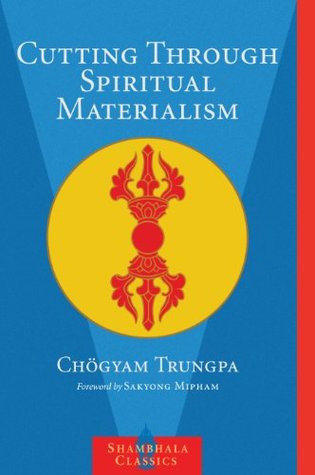More on this book
Community
Kindle Notes & Highlights
the moment of bodhi or “awake,” the entrance into tantra.
Energy is described in the Kriyayoga Tantra of Vajramala as “that which abides in the heart of all beings, self-existing simplicity, that which sustains wisdom.
This indestructible essence is the energy of great joy; it is all-pervasive, like space. This is the dharma body of nondwelling.”
The function of tantric practice is to transmute ego, enabling the primordial intelligence to shine through.
The word tantra means “continuity.”
Tantric wisdom brings nirvana into samsara.
Tantra teaches not to suppress or destroy energy but to transmute it;
go with the pattern of energy.
Natural circumstances are used to restore the original state of openness.
Everything he sees is an expression of spiritual discovery.
The mandala is generally depicted as a circle which revolves around a center, which signifies that everything around you becomes part of your
awareness, the whole sphere expressing the vivid reality of life.
the three yanas: the hinayana, the vehicle of method; the mahayana, the vehicle of shunyata or space; and the vajrayana or tantra, the vehicle of direct energy.
five basic qualities or buddha families: vajra, ratna, padma, karma, and buddha.
Each buddha family has an emotion associated with it which is transmuted into a particular “wisdom” or aspect...
This highlight has been truncated due to consecutive passage length restrictions.
Vajra is associated with anger, which is transmuted into mirrorlike wisdom.
Vajra is also associated with the element of water.
Vajra is the color white.
Anger
like a sheet of white paper, very fla...
This highlight has been truncated due to consecutive passage length restrictions.
potential of luminosity, of the brilliance of reflection which i...
This highlight has been truncated due to consecutive passage length restrictions.
Ratna is associated with pride and earth—
means that one is afraid to loosen up, is continually piling up defenses, building a fortress.
Equally, ratna is the wisdom of equanimity, which is all-pervading.
In the enlightened mind the anxiety of maintaining oneself is transmuted into equanimity.
is yellow, connected with the sun’s rays.
ratna is gold, amber, saffron. It has a sense of depth, real earthiness rather than texture,
Padma is connected with passion, a grasping
quality, a desire to possess.
The consuming quality of burning fire, desire, is transmuted into the wisdom of binding together through communication.
Padma is linked with the west and the color red.
In the awake state the heat of passion is transmuted into the warmth of compassion.
Karma is associated with the emotion of jealousy, envy, and the element of wind.
“Absolute paranoia”
The color of karma is the green of vegetables and grasses, of growing energy.
Buddha is associated with dullness and has an all-pervading quality
dullness is the action of ignoring. Ignoring does not want to see.
the flicker of doubt and sloth in this dullness is transformed into wisdom.
Buddha is somewhat desolate, too spacious.
Buddha is connected with the color blue, the cool, spacious quality of sky.
In order to surrender you somehow must identify yourself completely with the fullness and richness of life.
in the early stages of the path surrender means becoming an empty vessel.
Yidams are the different aspects of the five buddha principles of energy.
They are depicted as male herukas or female dakinis and can be either wrathful or peaceful. The wrathful aspect is associated with transmutation by force, leaping into wisdom, and choiceless transmutation.


